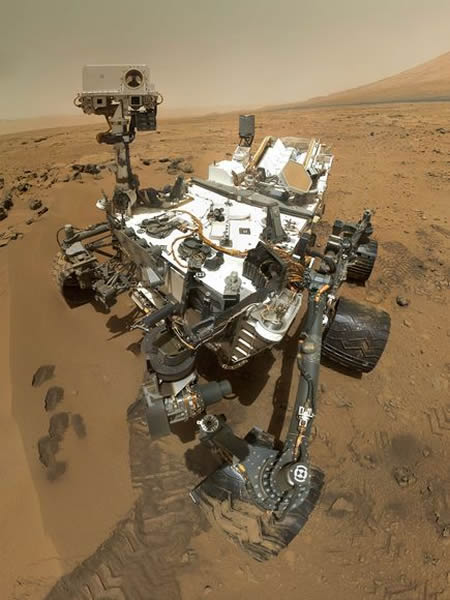Mars Rover Curiosity Has First Big Malfunction
A self-portrait generated by the Mars rover Curiosity last October.
The Mars rover Curiosity experienced its first significant malfunction on Wednesday, when one of its two onboard computers became corrupted and failed to turn off and enter "sleep mode" as planned.
The Curiosity team at NASA's Jet Propulsion Laboratory sent up commands to switch all operations from the corrupted A computer to the twin B computer early Thursday morning, according to a Thursday NASA statement.
Most spacecraft have a backup computer to step in if the primary computer fails.
Richard Cook, project manager for the Curiosity project, said the problem was the most serious experienced by the rover so far in its nearly seven months on the red planet.
Cook said the team was most concerned Wednesday night, before they got a handle on the nature of the problem. But once they began to understand better, it became clear that switching to the other computer was necessary and unlikely to have long-term consequences.
He said he hoped Curiosity would resume science work in about a week.
On other space missions, Cook said, similar problems were caused by high-energy solar and cosmic ray strikes. He said that's probably what happened this time.
Curiosity has protections against such high-energy disruptions, but the problem was compounded by what appears to have been the location of the strike—in the directory, or "table of contents," of the computer's memory. Cook said the location of the strike appears to have caused the computer to get stuck in an endless loop.
While previous rovers experienced many so-called "anomalies" during the early part of their treks, the much larger and more complex Curiosity has been almost trouble-free since its dramatic, pinpoint landing last August.
That changed Wednesday when the spacecraft stopped sending recorded data back to Earth, though it did continue sending "current status" information.
The problem was sent to the Curiosity "anomaly team," which decided the computer swap was needed. The swap occurred around Thursday around 2:30 a.m. Pacific Time.
"While we are resuming operations on the B-side, we are also working to determine the best way to restore the A-side as a viable backup," said Magdy Bareh, leader of the mission's anomaly resolution team and a JPL engineer.
After switching to the B computer—which was used during part of Curiosity's flight to Mars but has never been used on the surface—the rover went into "safe mode" and stopped almost all activities.
The vehicle is currently holding powder from the first rock ever drilled on Mars, and analysis of that precious content will now have to wait.
Even if the rover is fully operational again in a week, the amount of science it can perform is limited. That's because the sun comes between Mars and the Earth in early April, partially blocking the path for radio commands for an entire month.
The Curiosity team had planned to send back science data from Mars during that period—called "solar conjunction"—but had decided not to send up any commands. The team was concerned that the commands could be disrupted by the sun and consequently harm the rover computer.
Marc Kaufman
for National Geographic News
Published March 1, 2013












